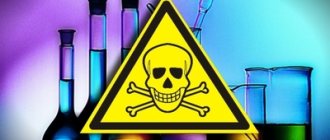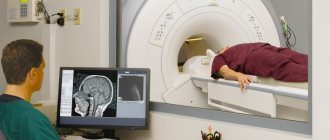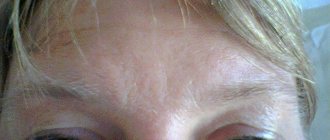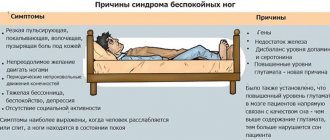| Paranoid syndrome |
Paranoid syndrome
(from the Ancient Greek prefix παρά “near, at, side, near”, νόος, νοῦς “mind, reason” and εἶδος “similar”; lat. syndromum paranoidum) is a psychopathological syndrome characterized by paranoid delusions and corresponding content delirium with changes in the emotional sphere and behavior[1]. Paranoid delusions include ideas of persecution, relationship, poisoning, influence, damage, destruction, blame, and others [1]. Some authors regard it as a near-delusional syndrome, characterized by fragmentary, often unsystematized delusional ideas of polythematic (as opposed to paranoid syndrome), often persecution and (or) sometimes physical influence with hallucinations, pseudohallucinations and phenomena of mental automatism. It is usually described as a syndrome in the clinical picture of which there is secondary delusion (based on hallucinations and pseudohallucinations), which occurs acutely against the background of anxiety, fear, depression, hallucinations, mental automatisms, and catatonic disorders. Other researchers describe it as a primary delusion, which is combined with pseudohallucinations or hallucinations, and other phenomena of mental automatism [2].
Causes of the disease
Doctors find it difficult to name the exact cause or their complex, which can provoke a violation of a person’s psycho-emotional state. The etiology can be completely different and is formed under the influence of genetics, stressful situations, congenital or acquired neurological pathologies, or due to changes in brain chemistry.
Some clinical cases of the development of paranoid syndrome still have a clearly established cause. To a greater extent, they occur under the influence of psychotropic and narcotic substances and alcohol on the body.
Classification and symptoms of the disorder
Doctors agree that paranoid and paranoid syndromes have similar symptoms:
- patients are more likely to be in a state of secondary delusion, which manifests itself in the appearance of various images, rather than in a state of primary delirium, when they do not understand what is happening to them;
- in each clinical case, a predominance of auditory hallucinations over visual phenomena was noted;
- the state of delirium is systematized, which allows the patient to tell the reason and name the date of origin of anxious feelings;
- in most cases, each patient clearly understands that someone is spying on him or stalking him;
- Patients associate the views, gestures and speech of strangers with hints and a desire to harm them;
- sensory impairment.
Paranoid syndrome can develop in one of two directions: delusional or hallucinatory. The first case is more severe, because the patient does not make contact with the attending physician and loved ones; accordingly, making an accurate diagnosis is impossible and is postponed indefinitely. Treatment of delusional paranoid syndrome takes longer and requires strength and perseverance.
Hallucinatory paranoid syndrome is considered a mild form of the disorder, which is due to the patient’s sociability. In this case, the prognosis for recovery looks more optimistic. The patient's condition can be acute or chronic.
Paranoid syndrome: manifestations and methods of correction – Suppressed
Paranoid syndrome is a systematic delusion of various contents.
It can be a delusion of jealousy, invention, persecution, love, hypochondriacal. Characterized by a gradual and slow course.
Are you having any problem? Enter “Symptom” or “Name of the disease” into the form, press Enter and you will find out all the treatment for this problem or disease.
The site provides reference information. Adequate diagnosis and treatment of the disease is possible under the supervision of a conscientious doctor. Any medications have contraindications. Consultation with a specialist is required, as well as detailed study of the instructions! Here you can make an appointment with a doctor.
With such a disorder, there are no manifestations of mental automatism or hallucinations.
Development factors
As the disorder progresses, behavior becomes increasingly driven by delusions:
- The flexibility of thought processes decreases and then completely disappears;
- Facts that differ from the delusional picture of perception are ignored or interpreted in accordance with the delusional theory;
- The speech becomes detailed.
The disease can affect relationships with others, changing attitudes and behavior towards friends and loved ones.
Causes of the disease
Paranoid syndrome often develops in schizophrenia. The disorder may accompany presenile, senile and vascular psychoses.
It may occur with organic brain lesions, alcoholism or epilepsy. This disorder can be either the underlying disease or be complicated by other pathologies: paranoid or paraphrenic syndromes.
The main role in the development of the disease belongs to hereditary predisposition (in relatives susceptible to psychiatric diseases, a tendency to a certain type of disorder predominates).
Signs and symptoms
Some character traits can contribute to the development of paranoia:
- Low self-criticism;
- Excessive straightforwardness;
- Suspicion;
- Mistrust;
- Excessive egocentrism;
- Feeling of superiority over people.
For paranoid syndrome in patients:
- Their activity increases, they begin to actively prove delusional theories to others, convincing them of the correctness of their arguments.
- The patients' statements are verbose and detailed - they strive to convince others of the logic and correctness of their theories.
- All ideas are combined with the main delusional theory - the patient is able to interpret what is happening in a way that corresponds to his perception of reality.
- A delusional idea has a certain direction - one main idea develops, to which the rest are subordinated over time.
- Events that do not correspond to the delusional theory are rejected, ignored, or interpreted according to the delusional idea - these signs already help diagnose the disease.
False memories arise - they reinforce the main delusional theory, the patient is confident in the veracity of the memories.
You should not try to convince a person with a disorder - when defending his point of view, the patient can become aggressive and react aggressively to others.
Development of mental illness
The danger is that this syndrome takes a long time to develop, so it is difficult to track the onset of the disorder. At first, the development of the disease can be mistaken for a character trait or eccentricity.
Due to the impossibility of early diagnosis and timely initiation of treatment, the onset of the disease can be missed, which can make the patient dangerous to others and himself - various ideas, including persecution, can lead to actions that pose a danger to the patient and his loved ones.
https://feedmed.ru/bolezni/psihicheskie/paranojjalnyj-sindrom.html
The form of the disease is called chronic paranoid syndrome.
There is an acute form - such a disorder manifests itself suddenly, as an idea or insight.
With this course of the disease, ideas will be less systematized and it will be much easier to track such a development of the disease due to a sharp change in behavior. Exacerbation is caused by nervous shock or stress, taking nootropic drugs.
Often the disorder occurs in schizophrenia, delusional manifestations are noted: obsessions lead to a revaluation of one’s personality and the personality of others.
Difficulties in relationships with others may worsen:
- Due to jealousy, the disease can provoke a more active search, attempts to identify imaginary rivals;
- Delusions of persecution;
- Attempts to figure out and catch the pursuer.
With this course of the disease, paranoid schizophrenia develops - in addition to the emergence of imaginary memories, delusional ideas, various hallucinations may appear: both auditory and visual.
Effective treatments
To treat the symptoms of paranoia, psychotropic drugs that suppress the manifestation of the disorder are often used. They can be used in inpatient treatment or on an outpatient basis, under the supervision of a physician.
The selection of the drug is based on the severity of the condition, the severity of the manifestations, the degree of manifestation of affective disorders, and the patient’s susceptibility to the active ingredients of the drugs.
The main medications are broad-spectrum antipsychotics, which can quickly reduce the manifestations of the disease.
When systematic interpretative delusions and hallucinatory symptoms occur, piperazine derivatives and butyrophenones can be used. In the presence of depressive syndrome, antidepressants can be added to the main course of treatment.
In the chronic form of the disease, medications are taken regularly in a dosage agreed with the attending physician. In the case of the acute form, medications can be administered parenterally and are prescribed in higher doses than in the chronic form.
Outpatient treatment is carried out in the absence of aggressive tendencies, after the degree of manifestation of the disorders has decreased. This treatment uses the same drugs as inpatient treatment, but in lower dosages.
Long-acting antipsychotics are widely used - they help organize medication intake and reduce their uncontrolled use.
Result of therapy and prognosis
During treatment, after the symptoms of this pathological condition have reduced, the patient does not always show a critical perception of the idea to which he was exposed during the illness. After a certain time, this idea loses its relevance for the patient, and delusional activity can decrease significantly.
The prognosis for treatment when paranoia occurs is generally favorable due to the gradual development of the disorder and the slow complication of symptoms.
If delirium has a narrow focus, then it may not affect other areas of life or affect work. Social and clinical prognosis is favorable with the development of a critical attitude towards a previously supported delusional idea.
Doctor: Olga Shishkina ✓ Article checked by doctor
Source:
Paranoid syndrome: description, causes, symptoms and treatment features
Health May 15, 2016
There are no healthy people, there are unexamined ones. Mental disorders are the scourge of our time. However, you should not blame such people: it is a disease, like diabetes, but who would look at a diabetic with contempt? The sad thing about such diseases is that diabetes cannot spoil relationships with others or even harm them. But paranoia can...
Description of the disorder
People with paranoid syndrome are usually characterized by a pervasive mistrust and suspicion of other individuals, which manifests itself in systematic delusions.
A person with this disorder almost always believes that the motives of others have underlying or malicious intent. They may cyclically talk about their suspicions to a trusted person, ignoring the main topic of the conversation.
If a trusted person catches him in the wrong, he automatically falls under suspicion of conspiring with enemies and haters.
Another option is when a person sees everywhere a certain conspiracy drawn up against him by a certain group of people, and he tells about it to everyone he meets.
In this way, the patient wants to protect himself from “attacks” and make others aware of this.
In these cases, the hallucinatory-paranoid syndrome may manifest itself in the fact that the patient calls the police or contacts other social institutions, reporting “attempts” by attackers.
Individuals with this disorder assume that others will be out to take advantage of them or deceive them, even when no evidence of this exists.
Although having some phobia and suspicion is normal for most people, for those with paranoia, the disorder permeates almost all professional and personal relationships.
This behavior is stable and long-lasting, no matter what the environment is.
People diagnosed with paranoid syndrome often have problems with loved ones or relatives. This manifests itself in regular arguments, baseless complaints, accusations and hostile alienation.
This behavior leads to dysfunction or dysfunction in social work because paranoids are hypervigilant, secretive, and do not display friendly, affectionate feelings. A total distrust of others causes an excessive need to be self-sufficient and autonomous.
Such people must also have a high degree of control over others. Often these are rude and harsh people who criticize others and are very difficult to communicate with.
Paranoid syndrome: symptoms
- Unfounded suspicions that others are taking advantage of them, harming them or deceiving them.
- Concerns and unjustified doubts about the loyalty and reliability of friends, spouses, or partners.
- They are reluctant to trust others because of an unreasonable fear that the information will be used maliciously against them.
- They perceive comments or criticism addressed to them as humiliation or a threat and immediately react with vicious attacks or counterattacks.
- They stubbornly do not forgive insults.
- They have delusional ideas, without justification, regarding the fidelity of a spouse or sexual partner.
- Patients are confident that people nearby are whispering or laughing, mocking them (verbal illusions).
Examples of paranoid syndrome
- A person may feel that most of the people at work are conspiring to keep him out of his position; that people laughing nearby are discussing him; they don’t invite you to tea or a party because they hate you.
- A person suffering from paranoia often superimposes their delusions onto real events and mixes partial memories with non-existent events (and therefore the listener cannot understand whether it is fact or fiction).
- The hallucinatory-paranoid syndrome can manifest itself in the fact that a person feels as if people are looking at him somehow evilly, with hatred, and want to attack and cause harm. It may seem that everyone around him is secret agents sent to capture him and send him to prison. That he has listening devices in his room, and in his absence opponents enter the house. In more severe cases, there are obsessive ideas that insects are crawling on the body, that food is poisoned, etc.
- Delusion may also be associated with an imaginary underestimation of the patient’s uniqueness, giftedness, or scientific discovery. The paranoid will demonstrate his invaluable talent everywhere and prove that his “enemies” are simply jealous of him.
This disorder is most often diagnosed after the age of forty. It is difficult to detect the disease in children or adolescents because they are constantly changing and developing as individuals. However, if paranoia is diagnosed in childhood, the features of the disease should be present for at least a year. Psycho-emotional personality disorders are more common in men than in women.
Hallucinations
Hallucinations may include a voice in the head or the presence of imaginary friends. Voices often carry negative information.
Consequently, some of those who “hear” certain speeches seem to think that other people were talking about them or were “against” them.
There are patients who have come to terms with hallucinations and learned to live with them, not paying attention to their presence. One way to distract yourself is by listening to music or focusing on something else.
Source: https://glpni.ru/deppecciya/paranojyalnyj-sindrom-proyavleniya-i-sposoby-korrektsii.html
Hallucinatory-paranoid syndrome
This syndrome is a complex mental disorder of a person, in which he feels the constant presence of strangers who are spying on him and want to cause physical harm, even murder. It is accompanied by frequent occurrence of hallucinations and pseudohallucinations.
In most clinical cases, the syndrome is preceded by severe affective disorders in the form of aggression and neurosis. Patients are in a constant feeling of fear, and their delirium is so diverse that against its background the development of automaticity of the psyche occurs.
The progression of the disease has three stable stages, following one after another:
- A lot of thoughts swarm in the patient’s head, which every now and then pop up on top of those that have just disappeared, but at the same time it seems to him that every person who sees the patient clearly reads thoughts and knows what he is thinking about. In some cases, it seems to the patient that the thoughts in his head, not his, but those of strangers, are imposed by someone through the power of hypnosis or other influence.
- At the next stage, the patient feels an increase in the heart rate, the pulse becomes incredibly fast, cramps and withdrawal begin in the body, and the temperature rises.
- The culmination of the condition is the patient's awareness that he is in the mental power of another being and no longer belongs to himself. The patient is sure that someone is controlling him by penetrating his subconscious.
Hallucinatory-paranoid syndrome is characterized by the frequent appearance of pictures or images, blurry or clear spots, while the patient cannot clearly describe what he sees, but only convinces others of the influence of an outside force on his thoughts.
Rave
Delirium is a disorder of thinking with painful reasoning, ideas, and conclusions inherent in this condition that do not correspond to reality and are not subject to correction, but in which the patient is unshakably and completely convinced. In 1913, this triad was formulated by K.T.
Jaspers, he noted that these signs are superficial and do not reflect the very essence of delusional disorder, but only suggest its presence. This disorder can only appear on a pathological basis.
Delirium deeply affects all spheres of the individual’s psyche, especially affecting the affective and emotional-volitional spheres.
The traditional definition of this disorder for the Russian school of psychiatry is as follows. Delirium is a set of ideas, painful reasoning and conclusions that have taken possession of the patient’s consciousness, falsely reflect reality and are not subject to correction from the outside.
Within medicine, delusional disorder is considered in general psychopathology and psychiatry. Delusions, along with hallucinations, are included in the group of psychoproductive symptoms. A delusional state, being a disorder of thinking, affects one of the areas of the psyche, with the affected area being the human brain.
Schizophrenia researcher E. Bleuler noted that the delusional state is characterized by: – egocentricity, with a strong affective coloring, which is formed on the basis of internal needs, and internal needs can only be affective.
The concept of “delirium” in colloquial language has a different meaning from the psychiatric one, which leads to its incorrect use from a scientific point of view.
For example, in everyday life, delusional behavior is the unconscious state of a person, accompanied by meaningless, incoherent speech, which often occurs in patients with infectious diseases.
From a clinical point of view, this phenomenon should be called amentia, since it is a qualitative disorder of consciousness, not thinking. Similarly, other mental disorders, such as hallucinations, are mistakenly called delusions in everyday life.
In a figurative sense, a delusional state includes any incoherent and meaningless ideas, which is also incorrect, since they may not correspond to the delusional triad and act as delusions of a mentally healthy individual.
Examples of nonsense. The delusional state of paralytics is filled with content about bags of gold, untold riches, thousands of wives. delusional ideas are often concrete, figurative and sensual. For example, a patient can recharge from an electrical outlet, imagining himself as an electric locomotive, or can go without drinking fresh water for weeks because he considers it dangerous for himself.
Patients with paraphrenia claim that they live for a million years and are convinced of their immortality or that they were senators of Rome or took part in the life of ancient Egypt; other patients claim that they are aliens from Venus or Mars.
At the same time, such people operate with figurative, vivid ideas and are in a state of heightened mood.
Symptoms of delirium
Delirium deeply affects all spheres of the individual’s psyche, especially affecting the affective and emotional-volitional spheres. Thinking changes in complete submission to the delusional plot.
Delusional disorder is characterized by paralogicality (false inference). The symptoms are characterized by redundancy and belief in delusional ideas, and in relation to objective reality there is a discrepancy. At the same time, the person’s consciousness remains clear, the intellect is slightly weakened.
The delusional state should be distinguished from the delusions of mentally healthy individuals, since it is a manifestation of the disease. When differentiating this disorder, it is important to consider several aspects.
1. For delusions to occur, there must be a pathological basis, just as personality delusions are not caused by a mental disorder.
2. Delusions relate to objective circumstances, and delusional disorder relates to the patient himself.
3. Correction is possible for delusions, but for a delirious patient this is impossible, and his delusional belief contradicts the previous worldview before the onset of this disorder. In real practice, sometimes differentiation can be very difficult.
Acute delirium. If consciousness is completely subordinated to a delusional disorder and this is reflected in behavior, then this is acute delirium. Occasionally, the patient can adequately analyze the surrounding reality and control his behavior, if this does not relate to the topic of delirium. In such cases, delusional disorder is called encapsulated.
Primary delirium. Primary delusional disorder is called primordial, interpretive, or verbal. The primary cause of it is a defeat of thinking. The logical, rational consciousness is affected. In this case, the patient’s perception is not impaired and he is able to be productive for a long time.
Secondary (figurative and sensory) delusions arise as a result of impaired perception. This condition is characterized by a predominance of hallucinations and illusions. Delusional ideas are inconsistent and fragmentary.
Disruption of thinking appears a second time, a delusional interpretation of hallucinations sets in, and there is a lack of conclusions that occur in the form of insights - emotionally rich and vivid insights.
Elimination of the secondary delusional state is achieved mainly by treating the symptom complex and the underlying disease.
There are figurative and sensory secondary delusional disorder. With figurative thinking, fragmentary, scattered ideas arise, similar to memories and fantasies, that is, delusions of representation.
In sensual delirium, the plot is visual, sudden, rich, concrete, emotionally vivid, and polymorphic. This condition is called delusion of perception.
Delusional imagination differs significantly from sensory and interpretative delusional states. With this variant of delusional disorder, ideas are not based on perceptual disorders or on a logical error, but arise on the basis of intuition and fantasy.
There are also delusions of grandeur, delusions of invention, and delusions of love. These disorders are poorly systematized, polymorphic and very variable.
Delusional syndromes
In Russian psychiatry, it is currently customary to distinguish three main delusional syndromes.
Paranoid syndrome is unsystematized, often observed in combination with hallucinations and other disorders.
Paranoid syndrome is an interpretative, systematized delusion. Most often monothematic. With this syndrome, there is no intellectual-mnestic weakening.
Paraphrenic syndrome is fantastic, systematized in combination with mental automatisms and hallucinations.
Mental automatism syndrome and hallucinatory syndrome are close to delusional syndromes.
Some researchers identify a delusional “paranoid” syndrome. It is based on an overvalued idea that arises in paranoid psychopaths.
The plot of delirium. The plot of delirium is understood as its content.
The plot, as in cases of interpretative delirium, is not a sign of illness and directly depends on the socio-psychological, political and cultural factors within which the patient lives.
There can be a lot of such plots. Often ideas arise that are common to the thoughts and interests of all mankind, as well as characteristic of a given time, beliefs, culture, education and other factors.
Based on this principle, three groups of delusional states are distinguished, united by a common plot. These include:
- Delusion of persecution or mania of persecution, persecutory delusion, which in turn includes:
- delusion of damage - the belief that the patient’s property is being damaged or stolen by some people;
- delusion of poisoning - the patient is convinced that one of the people wants to poison him;
- delusion of relation - it seems to a person that the entire environment is directly related to him and the behavior of other individuals (actions, conversations) is determined by their special attitude towards him;
- delusion of meaning - a variant of the previous plot of delirium (these two types of delusional state are difficult to differentiate);
- delusion of influence - a person is haunted by the idea of outside influence on his feelings, thoughts with an accurate assumption about the nature of this influence (radio, hypnosis, “cosmic radiation”); – erotic delusion – the patient is sure that he is being stalked by his partner;
- delusions of litigiousness - the sick person fights to restore “justice”: courts, complaints, letters to management;
- delusions of jealousy - the patient is convinced that his sexual partner is cheating;
- delusion of staging - the patient’s conviction that everything around is specially arranged and scenes of some kind of performance are being played out, and an experiment is being conducted, and everything is constantly changing its meaning; (for example, this is not a hospital, but a prosecutor’s office; a doctor is an investigator; medical staff and patients are security officers disguised in order to expose the patient);
- delusion of obsession - a person’s pathological belief that he has been possessed by an evil spirit or some hostile creature;
- Presenile delirium is the development of a picture of depressive delirium with ideas of condemnation, guilt, and death.
- Delusions of grandeur (expansive delusions, delusions of grandeur) in all its varieties include the following delusional states:
- delusions of wealth, in which the patient is pathologically convinced that he possesses untold treasures or wealth;
- delirium of invention, when the patient is susceptible to the idea of making a brilliant discovery or invention, as well as unrealistic various projects;
- delirium of reformism - the patient creates social, absurd reforms for the benefit of humanity;
- delusion of origin - the patient believes that his real parents are high-ranking people, or attributes his origin to an ancient noble family, another nation, etc.;
- delirium of eternal life - the patient is convinced that he will live forever;
- erotic delusion - the patient’s conviction that a certain person is in love with him;
- delusional love conviction, which is noted in female patients by the fact that famous people love them, or everyone who meets them at least once falls in love;
- antagonistic delusion - the patient’s pathological belief that he is a passive witness and contemplator of the struggle of opposing world forces;
- religious delusional belief - when a sick person considers himself a prophet, claiming that he can perform miracles.
- Depressive delusions include:
- delusions of self-abasement, self-blame, sinfulness;
- hypochondriacal delusional disorder – the patient’s belief that he has a serious illness;
- nihilistic delirium - a false feeling that the patient or the surrounding world does not exist, and the end of the world is coming.
Separately, induced (induced) delusions are distinguished - these are delusional experiences that are borrowed from the patient through close contact with him. This looks like being “infected” with delusional disorder.
The person to whom the disorder is induced (transmitted) is not necessarily submissive or dependent on the partner.
Usually those people from the patient’s environment who communicate very closely with him and are connected by family relationships are infected (induced) with delusional disorder.
Stages of delirium
The stages of delirium include the following stages.
1. Delusional mood - the belief that changes have occurred around and trouble is approaching from somewhere.
2. Delusional perception arises in connection with an increase in anxiety and a delusional explanation of individual phenomena appears.
3. Delusional interpretation - a delusional explanation of all perceived phenomena.
4. Crystallization of delirium – the formation of complete, coherent, delusional ideas.
5. The fading of delirium - the emergence of criticism of delusional ideas.
6. Residual delusions – residual delusional phenomena.
Treatment of delirium
Treatment of delusional disorder is possible with methods that affect the brain, that is, psychopharmacotherapy (antipsychotics), as well as biological methods (atropine, insulin comas, electrical and drug shock).
The main method of treatment for diseases that are accompanied by delusional disorder is treatment with psychotropic drugs. The choice of antipsychotics depends on the structure of the delusional disorder.
In case of primary interpretative with pronounced systematization, drugs with a selective nature of action (Haloperidol, Triftazin) will be effective.
For affective and sensory delusional states, broad-spectrum antipsychotics (Frenolone, Aminazine, Melleril) are effective.
Treatment of diseases accompanied by delusional disorder, in many cases, occurs in a hospital setting followed by supportive outpatient therapy. Outpatient treatment is prescribed in cases where the disease is observed without aggressive tendencies and is reduced.
Psychoneurologist Hartman N.N.
Doctor of Medical and Psychological
Source: https://psihomed.com/bred/
Depressive-paranoid syndrome
The main cause of this form of the syndrome is the experience of a complex traumatic factor. The patient feels depressed and is in a state of depression. If these feelings are not overcome at the initial stage, sleep disturbance subsequently develops, up to complete absence, and the general condition is characterized by lethargy.
Patients with depressive-paranoid syndrome experience four stages of disease progression:
- lack of joy in life, decreased self-esteem, impaired sleep and appetite, sexual desire;
- the emergence of suicidal thoughts due to a lack of meaning in life;
- the desire to commit suicide becomes persistent, the patient can no longer be convinced otherwise;
- the last stage is delirium in all its manifestations, the patient is sure that all the troubles in the world are his fault.
This form of paranoid syndrome develops over a fairly long period of time, about three months. Patients become skinny, their blood pressure is compromised, and their heart function suffers.
Kinds
In total, there are four types of paraphrenia, identified by Kraepelin. Namely:
- systematic;
- expansive;
- confabulating;
- fantastic.
Systematic paraphrenia predominates in men. Most cases are diagnosed between 30 and 40 years of age. 20% of cases of paraphrenic delirium occur between 40 and 50 years.
Paraphrenia predominates in men
Unlike other varieties, it develops slowly, gradually leading to the progression of megalomania, without destroying the personality. At the first stage, the patient experiences mild anxiety and feels the hostility of the world around. Over time, this leads to auditory and visual hallucinations.
Expansive paraphrenic syndrome predominates in women aged 30 to 50 years. The main symptom is a pronounced delirium of abundant greatness. Fantasies of an erotic, mystical and religious nature predominate.
The first stage is characterized by mild intellectual excitement and talkativeness. The patient periodically stammers, his speech is partially incoherent. In this case, the patient is equally likely to become irritable.
Mild intellectual stimulation
Confabulating paraphrenia is common in both sexes. Prevails between the ages of 30 and 50 years. It is quite rare, the symptoms are not clearly expressed. Unlike other varieties, it comes without addiction to sex and erotic fantasies.
The main symptom is distortion of memories. The real past is replaced by fictional stories. Over time, the delirium becomes more fantastic, until the illness leads to mental collapse.
Fantastic paraphrenic syndrome is typical for men aged 30 to 40 years. It develops quickly, reaching the final stage—dementia—in 4-5 years. The symptoms are similar to classic schizophrenia.
Late stage dementia
At the first stage, the patient develops a strong persecution mania. Against this background, auditory hallucinations appear. Patients hear voices and comments on all their actions.
Mild excitement and motor pseudoperceptions appear. In conversations, the patient begins to use his own words. If this paraphrenia is diagnosed at an early stage, patients can be adapted to society.
Description of manic-paranoid syndrome
Manic-paranoid syndrome is characterized by elevated mood for no good reason, patients are quite active and mentally excited, they think very quickly and immediately reproduce everything they think. This condition is episodic and is caused by emotional outbursts of the subconscious. In some cases, it occurs under the influence of drugs and alcohol.
Patients are dangerous to others because they are prone to pursuing the opposite sex for sexual purposes, with possible physical harm.
Quite often, the syndrome develops against the background of severe stress. Patients are confident that those around them are plotting criminal acts against them. This results in a constant state of aggression and mistrust; they become withdrawn.
Paranoid syndrome
paranoid syndrome is a pathological state of the psyche, the main distinguishing feature of which is the presence of primary interpretive delusion (delusion of interpretation) .
The term “primary” means that the emerging thinking disorders (erroneous interpretation of certain events, phenomena) are not determined by pathology in other areas of mental activity (primarily in the sphere of perception). That is, a delusional interpretation of reality is not a consequence of the presence of hallucinations, pseudohallucinations or illusions.
Primary delusion is characterized by a high degree of systematization (detailed “elaboration”, plausibility) of the ideas expressed.
Symptoms of paranoid syndrome
* - the presence of delusional disorders is the main distinguishing feature of paranoid syndrome in schizophrenia from paranoid psychopathy; ** - the presence of “expanded” ideas of persecution usually indicates a paranoid syndrome.
Among the symptoms of paranoid syndrome in terms of content, hypochondriacal delusions and delusions of jealousy are most often noted, and less often - ideas of invention (“technical improvements”) and reformism (“social reconstruction”).
Finally, litigious (querulyant) delusion is distinguished - a tendency to complain, “truth-seeking” with the conviction that patients have been unfairly “neglected”, undeservedly forgotten, etc.
, as well as paranoid delusions of persecution (in this case, unlike paranoid syndrome, pseudohallucinations and other phenomena of mental automatism are not detected).
The tendency to detail (thoroughness of thinking) is determined by the presence of hypermnesia (selective increase in memory for events that confirm delusional ideas, while repressing facts that contradict them from memory) and the affective tension of patients (their inability to calmly, “calmly” relate to the “subject” of delusional experiences: for hypochondriacal disorders - to one’s health, for ideas of jealousy - to the behavior of one’s wife, etc.). The consequence of hypermnesia and affective tension is pathological sthenicity (exceptional but selective activity, “purposefulness” in the implementation of delusional ideas or in their “confirmation”, combined with a lack of “flexibility”, inability to compromise). At the same time, facts that contradict delusional beliefs are “rejected without consideration.”
Ideas of persecution in paranoid syndrome are usually manifested by the experience of “underestimation”, “misunderstanding”, allegedly insufficiently positive attitude towards the patient on the part of others, and the conviction of “infringement” of his rights.
The identification of “expanded” ideas of persecution usually indicates that the patient has a paranoid rather than a paranoid syndrome (and in a paranoid syndrome they are necessarily combined with phenomena of mental automatism).
The importance of timely identification (and adequate assessment) of persecutory delusions is evidenced by the following anecdote.
Two psychiatrists are talking.
— How does that patient of yours feel with delusions of persecution?
- You know, he felt much better. Do you remember how suspicious, suspicious, and afraid of everything he was? Little by little, during the treatment, he improved: his fears disappeared, he was no longer hiding from anyone... It’s a pity that he was killed.
Finally, a typical symptom of paranoid syndrome is inappropriately increased self-esteem. It is significant that this symptom is detected even in such “defective” types of delirium as delusions of jealousy or hypochondriacal delusions.
In these cases, inadequate self-esteem is manifested in a derogatory assessment of others (with delusions of jealousy, the insignificance and unworthiness of the “rival” are emphasized, and with paranoid hypochondria, the patient’s increased self-esteem often manifests itself in derogatory characteristics of the medical personnel providing assistance to him).
To illustrate the stated provisions, the following example of paranoid syndrome is given below.
An example of paranoid syndrome
Senior lieutenant of the Internal Troops of the Ministry of Internal Affairs, 31 years old.
Anamnesis
Previous development without distinct features, successfully completed high school and technical university.
After graduating from the institute (in 1985), he was called up as a lieutenant to serve in the Internal Troops of the Ministry of Internal Affairs (for 2 years) in a small, remote, isolated garrison (guarding a “special facility”).
From the accompanying documents (service characteristics) it follows that he was appointed to the position of platoon commander, however, “due to official necessity” (lack of staffing, etc.) he immediately had to take up the duties of a company commander.
However, he practically did not go to work: he spent all his time in the garrison library, taking notes on the works of K. Marx and V. I. Lenin, as well as newspaper publications.
He explained to the command that he “must urgently complete important work,” “the country is undergoing restructuring and cannot be delayed,” “he is working on proposals to improve the management of the production system in the country.” Three months later, the unit commander informed him that “they managed to come to an agreement with an academician-economist in Leningrad,” to whom the patient could show his “work.”
Accompanied by a unit doctor, he was taken to the emergency department of the psychiatry clinic of the Military Medical Academy. During the initial examination, he told the doctor that he “was prepared for anything,” “knew that he would be misunderstood,” and asked for “a pen and paper to take notes.” He categorically refused to take medications. I didn’t communicate with anyone at the department; I wrote “continued work” all day long.
Diagnostic methods
If paranoid syndrome is suspected, it is necessary to take the person to a clinic, where they should undergo a thorough general medical examination. This is a method of differential diagnosis and allows us to clearly exclude mental disorders associated with stress.
When the examination is completed, but the cause remains unclear, the psychologist will schedule a personal consultation, during which a number of special tests will be performed.
Relatives should be prepared for the fact that after the first communication with the patient, the doctor will not be able to make a final diagnosis. This is due to reduced communication skills of patients. Long-term observation of the patient and constant monitoring of symptomatic manifestations are required.
For the entire diagnostic period, the patient will be placed in a special medical facility.
Paranoid syndrome: delusions, symptoms, in schizophrenia
Paranoid syndrome is a systematic delusion of various contents.
It can be a delusion of jealousy, invention, persecution, love, hypochondriacal. Characterized by a gradual and slow course.
Are you having any problem? Enter “Symptom” or “Name of the disease” into the form, press Enter and you will find out all the treatment for this problem or disease. The site provides reference information.
Adequate diagnosis and treatment of the disease is possible under the supervision of a conscientious doctor. Any medications have contraindications.
Consultation with a specialist is required, as well as detailed study of the instructions! Here you can make an appointment with a doctor.
With such a disorder, there are no manifestations of mental automatism or hallucinations.
Treatment of patients diagnosed with paranoid syndrome
Depending on what symptoms the paranoid syndrome shows, in each clinical case the treatment regimen is selected individually. In modern medicine, most mental disorders can be successfully treated.
The attending physician will prescribe the necessary antipsychotics, which, when taken in combination, will help bring the patient into a stable mental state. The duration of therapy, depending on the severity of the syndrome, is from a week to one month.
In exceptional cases, if the form of the disease is mild, the patient can undergo therapy on an outpatient basis.
What are the types of schizophrenia
There are several types of schizophrenia. And for successful treatment without consequences, it is necessary to identify the type of disease and select treatment specifically for it.
In total, it is customary to distinguish seven types of schizophrenia, different in signs and symptoms.:
- Catatonic - clarity of consciousness is maintained, but inhibition or, conversely, increased activity is observed, sometimes with impulsive and even aggressive actions.
- Hebephrenic - characterized by the manifestation of symptoms in adolescence, expressed in inappropriate behavior of the patient, bouts of gaiety are replaced by complete detachment.
- Paranoid (paranoid) is the only type that is accompanied by delusions and hallucinations, obsessions, and delusions of grandeur.
- Residual - residual chronic schizophrenia, characterized by symptoms in the form of depression, apathy, low speech and motor activity.
- Simple – the manifestation of symptoms is gradual, leading to a decrease in activity, both motor and emotional.
- Post-schizophrenic – a depressive state develops due to psychological stress.
- Undifferentiated - does not have pronounced symptoms, but is accompanied by a characteristic schizophrenic disorder.
Schizophrenia is quite difficult to diagnose, but the most common form is paranoid. Paranoid schizophrenia is accompanied by clarity of thinking and literacy, while the patient is susceptible to delusional disorders and hallucinations and can be dangerous both to himself and to others.
Drug therapy
The leading specialist in solving problems of mental personality disorder is a psychotherapist. In certain cases, if the disease is caused by the influence of drugs or alcohol, a specialist must work in tandem with a narcologist. Depending on the degree of complexity of the syndrome, medications will be selected individually.
For the treatment of mild forms, the following remedies are indicated:
- "Propazine."
- "Etaperazine."
- "Levomepromazine."
- "Aminazine."
- "Sonapax".
Moderate syndrome is treated with the following drugs:
- "Aminazine."
- "Chlorprothixene."
- "Haloperidol."
- "Levomepromazine."
- "Triftazine"
- Trifluperidol.
In difficult situations, doctors prescribe:
- "Tizercin."
- "Haloperidol."
- "Moditen Depot".
- "Leponex".
The attending physician determines which medications to take, their dosage and regimen.
What are the characteristics of a latent paranoid schizophrenic?
It is important to remember that only experienced doctors can correctly diagnose paranoid schizophrenia. As already mentioned, the main symptoms are hallucinations and delusions.
The following symptoms may be classified as latent schizophrenia::
- Lack of self-care;
- Very small vocabulary;
- Passivity or complete apathy;
- Hyperactivity or vice versa inhibition;
- Complete lack of social activity.
With latent schizophrenia, symptoms of the disease may be absent at present, but were observed in the past.
A person with paranoid syndrome suffers from delusional ideas, and the most basic of them is persecution mania.
At the same time, he perceives his sensations as realistically as a healthy person does. The patient is haunted by obsessions, confidence in his greatness, or, on the contrary, believes that someone is manipulating him; all this is very often expressed in communication with others. This is called paranoid delusion.
Prognosis for recovery
It is possible to achieve a stage of stable remission in a patient diagnosed with paranoid syndrome, provided that the request for medical help was made in the first days of detection of mental disorders. In this case, therapy will be aimed at preventing the development of the exacerbation stage of the syndrome.
It is impossible to achieve an absolute cure for paranoid syndrome. The patient’s relatives should remember this, but with an adequate attitude to the situation, the disease can be prevented from worsening.
Symptoms of paranoid schizophrenia
Unfortunately, this type of schizophrenia is not always treatable. The first signs of the disease usually begin to appear after adulthood.
They are accompanied by the following symptoms:
- Auditory hallucinations;
- Visual hallucinations;
- Olfactory hallucinations;
- Persecution mania;
- Megalomania;
- Split personality;
- Unreasonable anger;
- Indifference to loved ones;
- Aggression towards others;
- Confidence in manipulation;
- Confidence in superpowers;
- Complete indifference to life.
Schizophrenia is also dangerous because it can occur in a latent form for many years.












